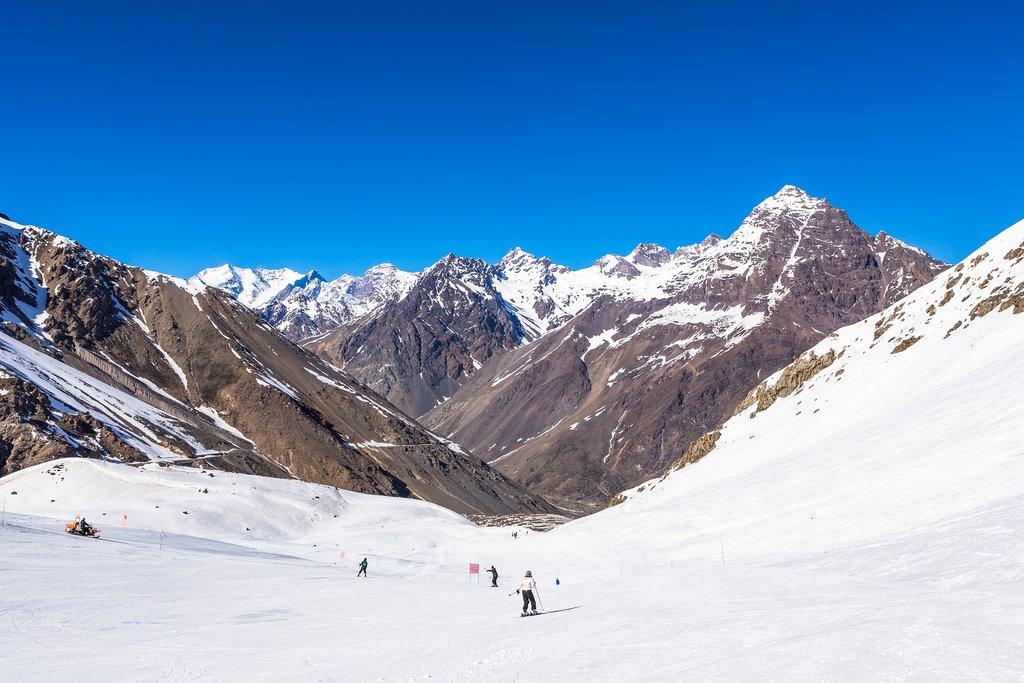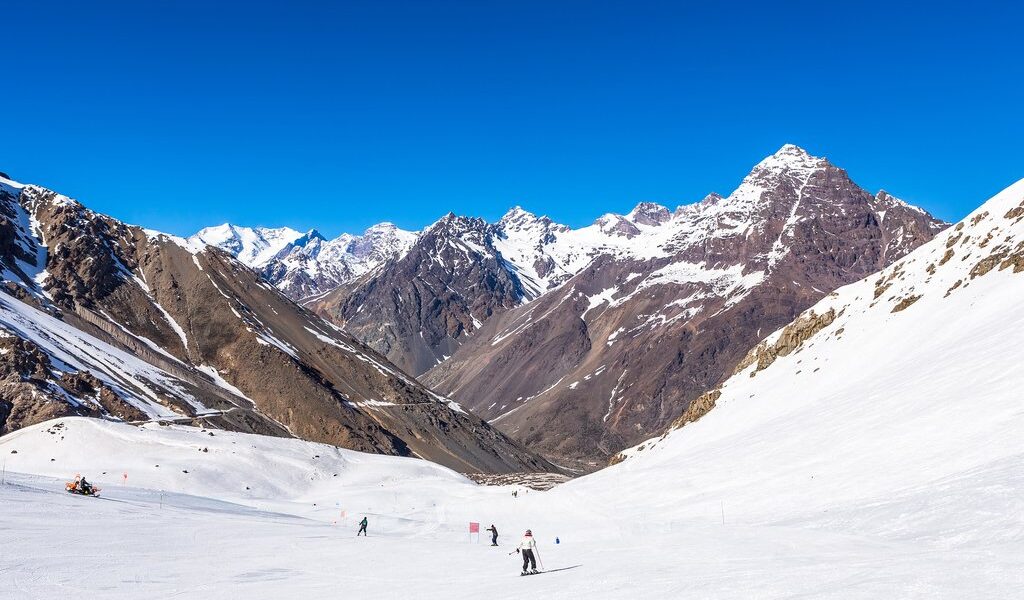
Chile’s rugged landscapes lure active travelers from all over the world. Thrill-seekers go whitewater rafting in the Lakes Region, sandboarding in the Atacama Desert, and paragliding high above Iquique. Down-to-earth alternatives include horseback riding on the beach and cycling in Pan De Azúcar National Park.
## Active Chile: An Expansive Playground of Adventure
Chile, a land of dramatic contrasts and breathtaking landscapes, beckons with a siren song to adventurers of all stripes. Spanning a staggering 2,653 miles of coastline, the nation offers an unparalleled array of active pursuits. Picture yourself gazing up at the perpetually snow-capped peaks of the Andes Mountains, or traversing the stark, surreal beauty of the Atacama Desert, the driest desert on our planet. Chile is undeniably an outdoor playground, a canvas upon which to paint your own thrilling escapade.
Whether your heart yearns to conquer the renowned W trek in Torres del Paine National Park, a challenge that draws hikers from every corner of the globe, or you dream of a more leisurely pace, perhaps a horseback ride along the windswept beaches, Chile provides the setting and the opportunity. Planning your adventures in Chile is remarkably straightforward. Tourism is flourishing, and the country stands ready, welcoming international visitors with open arms and a wealth of resources.
While some activities can certainly be enjoyed in the vibrant city of Santiago, the nation’s capital, for a truly immersive and authentic experience, consider venturing to one of Chile’s adventure hubs. Places like Puerto Natales, the gateway to Patagonia, or San Pedro de Atacama, nestled amidst the otherworldly landscapes of the Atacama Desert, offer a more localized perspective and the chance to connect with fellow active travelers, sharing stories and forging lasting memories.
Remember, when mapping out your Chilean itinerary, the seasons in the southern hemisphere run in reverse to those in the north. Summer, the peak season for many outdoor activities, particularly those in the stunning region of Patagonia, stretches from December through March. Conversely, the exhilarating ski season, when the Andes become a winter wonderland, runs from June through September. Plan accordingly to maximize your experience and make the most of the diverse offerings Chile has to unveil.
## Whitewater Rafting on the Rio Manso: A Thrilling Descent
Prepare to be swept away by the exhilarating rush of whitewater rafting in Chile. Spring, spanning from September through November in the southern hemisphere, unveils a particularly captivating spectacle. As the grip of winter loosens, ice and snow in the majestic mountains begin to melt, unleashing a torrent of crystal-clear, frigid water into the network of surrounding rivers. Among these aquatic arteries, the Rio Manso stands out as a destination of unparalleled allure for thrill-seekers. This powerful river carves its path through the heart of Nahuel Huapi National Park, located within the enchanting Lakes Region, a landscape of serene beauty and untamed wilderness.
Imagine embarking on a popular three-day guided excursion. Your journey begins on a relatively tranquil section of the river, allowing you to acclimate to the flow. As the Rio Manso converges with the Rio Villegas, the rapids intensify, escalating to Class II, providing a thrilling challenge for even seasoned rafters. This immersive experience offers more than just adrenaline. Keep your eyes peeled for opportunities to indulge in bird-watching, marveling at the diverse avian inhabitants of the region. During the warmer months of summer, or whenever the weather permits, take a refreshing dip in the invigorating waters. As evening descends, set up camp on the riverbanks, immersing yourself in the sounds of nature. Savor a traditional Chilean asado, a delectable barbecue featuring locally sourced meats. Throughout your journey, feast your eyes on breathtaking vistas of Andean peaks and glaciers, including the iconic Ventisquiero Colgante, the famed “hanging glacier,” a mesmerizing spectacle of frozen grandeur.
If time is a constraint, consider exploring shorter itineraries. One-day and week-long rafting adventures are also available, catering to various schedules and preferences.
For those seeking a rafting experience closer to the urban bustle, the Rio Maipo offers a convenient option. A day trip to the Rio Maipo is easily arranged from Santiago, providing a quick escape into the heart of nature’s embrace.
## Cycling in Pan De Azúcar National Park: Where Desert Meets the Ocean
If the allure of Chile beckons you to explore its vastness on two wheels, but you find yourself torn between the allure of the desert and the captivating embrace of the ocean, Pan De Azúcar National Park presents the perfect solution. This sprawling seaside nature reserve, nestled in the country’s northern reaches, offers a harmonious blend of arid landscapes and coastal charm. As you pedal along the designated trails, you’ll be transported to an otherworldly realm of towering cacti, vibrantly hued rock formations, and postcard-perfect views of the vast Pacific Ocean.
The park boasts a meticulously crafted trail network specifically designed for cyclists, ensuring a smooth and enjoyable ride for all skill levels. Flat sections of terrain cater to beginners, allowing them to ease into the experience and savor the surrounding scenery. For more seasoned mountain bikers seeking a challenge, the park’s undulating hills and valleys present an exhilarating test of endurance and skill.
Pan De Azúcar National Park caters to the needs of cyclists with an array of cyclist-friendly features. Discover strategically positioned lookout points, offering panoramic vistas of the surrounding landscape. Utilize the designated campsites, allowing for an immersive overnight experience. Take a refreshing dip in the inviting waters of the beaches.
Beyond the stunning scenery, Pan De Azúcar National Park is teeming with wildlife. A visit to this natural wonderland grants cyclists the unique opportunity to observe foxes and vicunas in their natural habitats. Perhaps most captivating of all are the colonies of Humboldt penguins. These charming creatures, waddling along the shoreline, are undoubtedly worth planning your entire adventure around, offering a memorable encounter with the region’s diverse fauna.
## Skiing & Snowboarding in the Andes: A Winter Wonderland Beckons
For residents of Santiago, geography bestows a remarkable advantage: the proximity to both the alluring ocean and the majestic mountains. Day-tripping to an Andean ski resort from the capital city is a cherished tradition, embraced by locals and international visitors alike. Within easy reach of Santiago, a collection of convenient ski areas awaits, each offering its unique charm and character.
Valle Nevado stands out as a premier destination, providing ski-in, ski-out accommodations for those seeking an extended stay. La Parva and Lagunillas, smaller and more intimate resorts, are ideally suited for families and beginners. Portillo, located slightly further from Santiago, near the border of Argentina, holds a special place in the hearts of expert skiers and snowboarders, renowned for its challenging slopes and breathtaking scenery.
Whether you prefer to bring your own equipment or rent it on-site, the Andean ski resorts offer comprehensive facilities to cater to your needs. Depending on the vagaries of traffic, the prevailing weather conditions, and the specific destination you choose, expect to spend approximately an hour or two traversing the distance from Santiago to the slopes.
## Hiking the W in Torres del Paine: A Classic Patagonian Odyssey
Embark on one of Chile’s most iconic outdoor adventures: hiking the W in Torres del Paine National Park. Within the park’s vast expanse, a network of trails beckons, but the W stands as the gold standard, a challenge embraced by seasoned hikers. The trek derives its name from the distinctive shape it carves through the park. The circuit typically requires five days to complete, although it can be adapted to last a day shorter or longer, depending on your preferences and pace.
The hike can be challenging, demanding the covering of as many as 15 miles each day. The Patagonian weather, notorious for its unpredictability, adds another layer of complexity. Despite the challenges, the reward is immeasurable: dazzling views of pristine lakes and glaciers, unfolding at every turn along the way.
If you plan to sleep in refugios, the park’s designated shelters, reservations are essential, particularly during the peak summer season, spanning from December through mid-March. Booking well in advance ensures you secure a comfortable and convenient place to rest after a day of exhilarating exploration.
The gateway to Torres del Paine National Park is Puerto Natales, a charming town that serves as a vital hub for travelers. Even if your stay is brief, a single night in Puerto Natales offers the chance to connect with fellow hikers who have recently returned from their adventures in the park, or to find companions to share the experience. The town also provides the opportunity to purchase or rent necessary equipment and gear, ensuring you are fully prepared for the journey ahead.
## Beach & Desert Horseback Riding: A Unique Perspective
Picture yourself galloping along a pristine beach, the waves crashing at your horse’s hooves, the invigorating sea breeze caressing your face. This idyllic fantasy can easily be transformed into a vibrant reality in Chile, even without extensive advance planning. In laid-back beach towns like Pichilemu, a haven for surfers and nature enthusiasts, you can effortlessly arrange a horseback ride with local guides. These experienced equestrians will lead you through tranquil forests and across deserted stretches of the sandy coast, revealing the hidden beauty of the Chilean shoreline.
Alternatively, immerse yourself in the stark beauty of the desert with a horseback riding adventure in the Atacama. Tours can be arranged from the charming town of San Pedro de Atacama, often including a delightful breakfast or a celebratory pisco sour toast. Another option closer to Santiago lies in the region of Cajón del Maipo. Within easy reach of the capital, travelers can join trail rides with the awe-inspiring backdrop of the Andes Mountains.
## Windsurfing & Paragliding in Iquique: A Playground for Adrenaline Junkies
While windsurfing may have originated in California, the windswept landscapes of Chile, thousands of miles down the Pacific coast, offer equally ideal conditions for this exhilarating sport. Windsurfing is a popular pastime throughout the country, but Iquique, nestled in the northern reaches, stands as the unofficial national capital for this adventure sport. Whether you are a novice or an experienced windsurfer, Iquique offers opportunities for all skill levels. After just six lessons, first-timers are typically equipped to venture out on their own, harnessing the power of the wind and waves. For those already trained, equipment rentals are readily available, allowing you to join the locals in their aquatic pursuits. Most of the windsurfing action centers around Cavancha and Blanca beaches, conveniently located just outside of the city center.
Beyond windsurfing, paragliding is another popular adventure sport in Iquique. On any given day, the sky above the city is adorned with dozens of colorful parachutes, creating a vibrant spectacle. Sign up for lessons to learn the fundamentals of paragliding, or opt for a tandem ride with a professional, the quickest way to experience the adrenaline-charged thrill of soaring through the air.
## Sandboarding in Death Valley: Conquering the Dunes
Think you’ve checked off every outdoor adventure that Chile has to offer? Think again. Sandboarding in Death Valley, located within the Atacama Desert – renowned as the driest and highest-altitude desert on Earth – is an experience that tests both physical and mental fortitude. A mere glance at the towering sand dunes, coupled with the intense heat of the sun beating down upon you, will reveal the challenge that awaits.
Sandboarding in the desert is best approached with a trained instructor, as part of a guided excursion departing from the town of San Pedro de Atacama. Essential equipment includes a helmet, a specialized board, and boots, similar to those used in snowboarding, typically included in the price of the class. Unlike snowboarding, however, Death Valley lacks the convenience of chairlifts. For every exhilarating downhill run, there is a demanding hike back to the summit.
Before embarking on this adventure, ensure you are well-hydrated and in good physical condition. And don’t forget to bring your camera. The landscapes of the Atacama Desert are truly breathtaking, providing countless opportunities to capture unforgettable memories.

